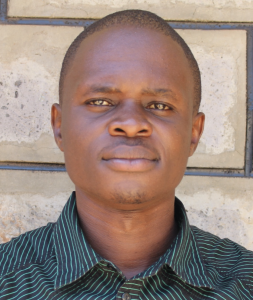Please note, original photos were taken before the pandemic.
Mutave Primary School is sponsored by the Pentecostal Assemblies of God Church and is located in Vihiga County. The institution was established in 2005 through the efforts of the community members. With a population of 23 pupils at the start of the school, today the institution boasts of 293 pupils and 14 teachers and staff. Located along the Serem-Gambogi Highway, the school is easily accessible. It has permanent buildings with a tiny playing ground used by students to stretch themselves during the short breaks.
An average day for the pupils in this school begins at 7:00 am when they arrive carrying water from home, along with their books. Bringing water into the school is usually intertwined in normal class activities because students must go back home during break times and lunchtime to get more water to sustain the school's needs. There is otherwise no source of water on campus.
There are many complications to an entire school relying on students for water. Pupils often arrive late and tired from their burdensome walk, and sometimes they are too tired to focus well in class. Classes are constantly disrupted by the need to send students out for more water, too. The learners end up with poor results in their national examinations and do not further their studies. The highway students must cross is also very busy with speeding motorbikes and cars, and there is always the threat of an accident as they try to cross the road slowly with their water.
Though the school relies on students carrying water from home for all of the school's drinking, cooking, and cleaning needs, the students can never carry enough to meet all of these needs. Still, it is a daily requirement the school has no choice but to enforce.
The jerrycans used to store the water students bring from home are very dirty and do not have lids. The water did not look safe for drinking because it was from unknown sources and prone to mishandling by the pupils with unwashed hands. Since the water is combined for use at school, even 1 contaminated source means everyone is at risk of water-related diseases. The consumption of pupils' dirty water has been known to cause typhoid, diarrhea, and stomachaches among both teachers and students.
"Water is a precious commodity and a scarcity of the commodity adversely affects the day-to-day running of this institution. Personally, I have once fallen victim of infection related to water and at different occasions I did miss coming to school," recalled Headteacher Joel Ngana.
Hygiene and sanitation in the school are wanting because the staff must enforce strict rationing of the water students bring for cooking and a little drinking. Cleaning, including handwashing and sanitizing the latrines, is often impossible for long stretches of time.
"Take a walk in our classrooms and you will always see how dusty and filthy they are and this is because we do not clean them regularly. This has greatly affected the levels of concentration as the environment is not conducive for learning," said Deputy Headteacher Richard Okura.
A shortage of latrines is also hindering the daily running of the school. The institution has just 8 toilets for the girls and 3 toilets for the boys. The insufficient number of toilets creates congestion at the facilities and this affects the normal lessons as pupils arrive late to class because they were waiting in line at the bathroom. Pupils crowd and push one another at the latrines during breaks, vying for a better spot in line.
Teachers are worried that with their lack of water and poor sanitation and hygiene status, a closure notice from the Ministry of Health could arrive any day now.
What We Can Do:
Rain Tank
A 75,000-liter rainwater catchment tank will help alleviate the water crisis at this school. The school will help collect the needed construction materials such as sand, bricks, rocks, and water for mixing cement. We will complement their materials by providing an expert team of artisans, tools, hardware, and the guttering system. Once finished, this tank will begin catching rainfall that will be used by the school’s students and staff for drinking, handwashing, cooking, cleaning, and much more.
We and the school strongly believe that all of these components will work together to improve standards at this school, which will help lead to better student academic performance and will help to unlock the potential for these students to live better, healthier lives.
Handwashing Stations
There is currently nowhere for students to wash their hands after using the latrines or before eating lunch, let alone the water to do so.
The student health club will oversee the 2 new handwashing stations we will provide, and make sure they are kept clean and in working condition. The club leaders will fill the handwashing stations with water daily and make sure they are always supplied with a cleaning agent such as soap or ash.
VIP Latrines
2 triple-door latrine blocks will be constructed with local materials that the school will help gather. 3 doors will serve the girls while the other 3 will serve the boys. All of these new latrines will have cement floors that are designed to be easy to use and to clean. And with a rain tank right on school property, there should be enough water to keep them clean.
Training on Health, Hygiene, COVID-19, and More
We will hold a 1-day intensive training session with students, teachers, and parents. This training will cover a wide range of topics including COVID-19 symptoms, transmission routes, and prevention; personal and environmental hygiene; and the operation and maintenance of the rain tank, latrines, and handwashing stations. There will be a special emphasis on handwashing.
Our team of facilitators will use a variety of methods to train, including participatory hygiene and sanitation transformation, and asset-based community development. We will initiate a student health club, which will prepare students to lead other pupils into healthy habits at school and at home. We will also lead lectures, group discussions, and provide illustrative handouts to teach health topics and ways to promote good hygiene practices within the school including handwashing and water treatment. We will then conduct a series of follow-up trainings before transitioning to our regularly scheduled support visits throughout the year.

 Rainwater Catchment
Rainwater Catchment
 Rehabilitation Project
Rehabilitation Project









































